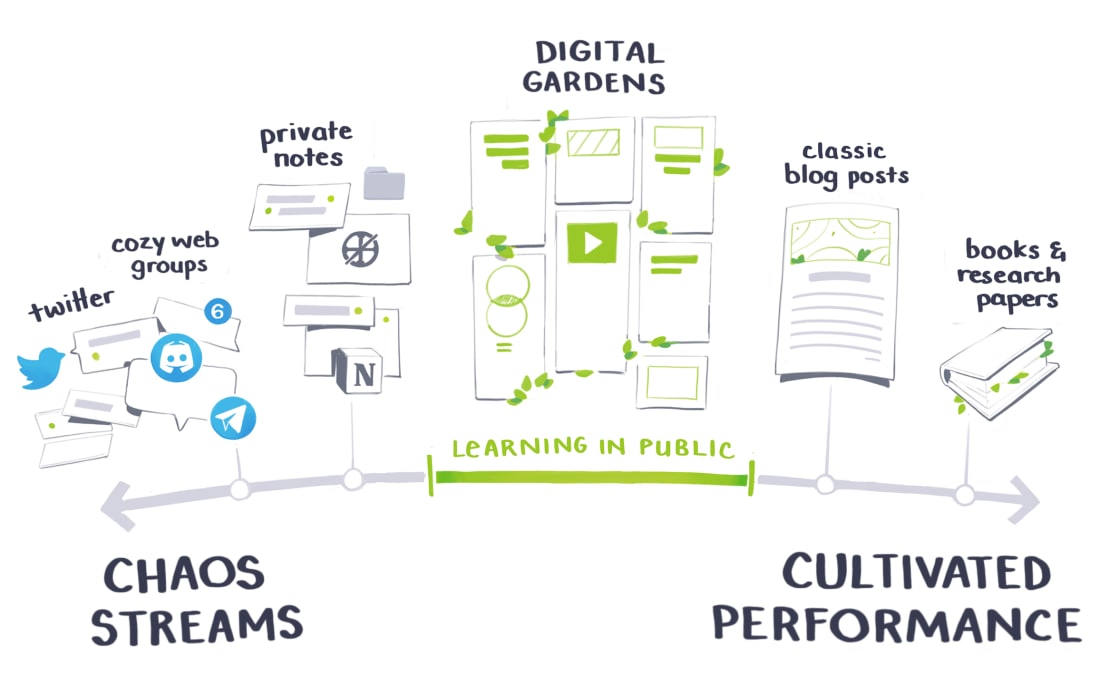up:: [[PKM MOC]]
Links:: [[Knowledge garden]]
Tags:: #🌱
# Digital gardens
Digital gardens are a type of website that have gained traction over the past few years which function entirely differently compared to the traditional blogging websites we have known.
In her article, Maggie Appleton, does a fantastic job summarizing the four main ways they differ compared to traditional websites.[^1]
1. Topography over Timelines

Digital gardens are organized with Wikipedia inspired bi-directional links instead of by time. This means Gardens are organized around contextual relationships and links rather than by the artificial nature of time.
2. Continuous Growth
Digital gardens are constantly evolving as the creators ideas evolve. Posts aren't necessarily in their finished state when published. For example, I personally organize my digital garden using three tags:
1. 🌱: represents barely fleshed ideas
2. 🌿: represents more fleshed out ideas that need to be polished and linked out
3. 🌲: represents evergreen notes that are close to full form but can still change.
3. Imperfection and Learning in Public\

Gardens are imperfect by design because they don't only publish notes that are fully evergreen. The idea is gardeners participate in [[Public learning]] which is seen by many as a more honest intimate content creation process.
4. Playful, Personal, and Experimental
Gardens are non-homogenous by nature. My obsidian vault hosts all of the topics I'm interested in (which is a lot). People that come to see my vault aren't here just for the learnings but for my unique personality as well.
### Gardens break us out of our time bound nature
I think the main power of Digital Gardens in comparison to traditional blogging is they break us out of the [[Never Ending Now]]. They are organized by context and links rather than time.
This puts a promotion on following your curiosity and wonder instead of what is most new, something that most other information mediums get backwards.
Related:
___
# Resources
[^1]: [[A Brief History & Ethos of the Digital Garden]]